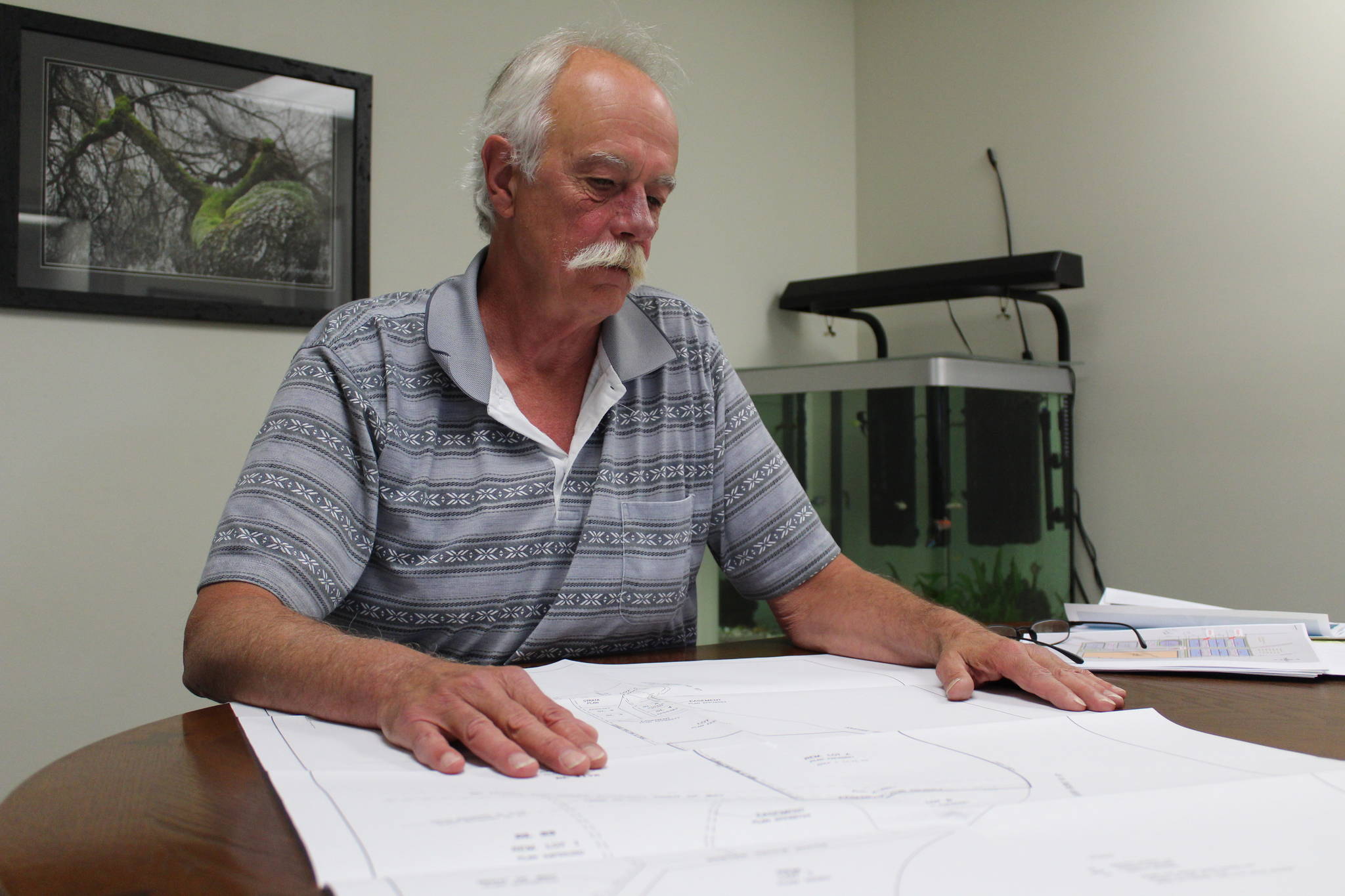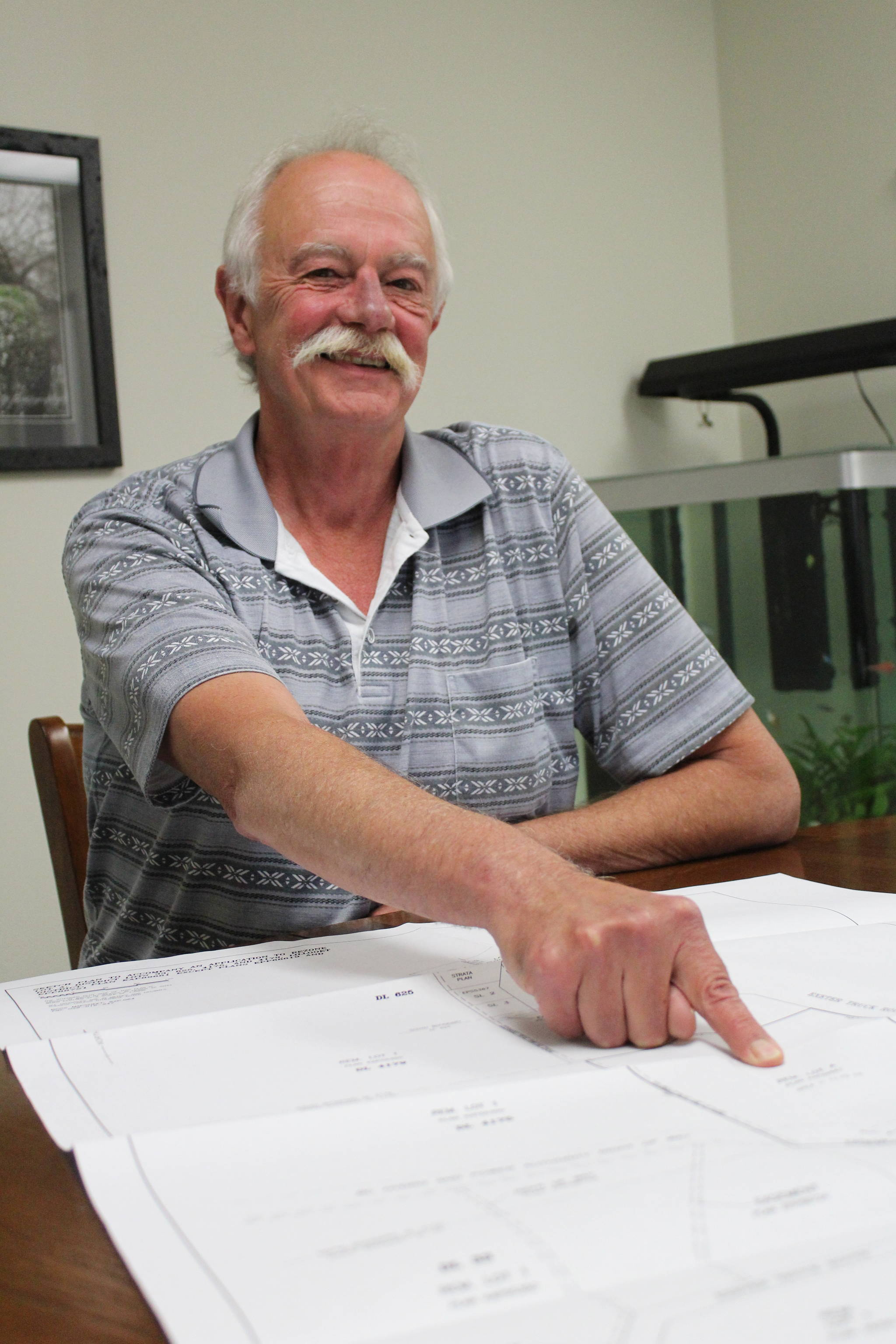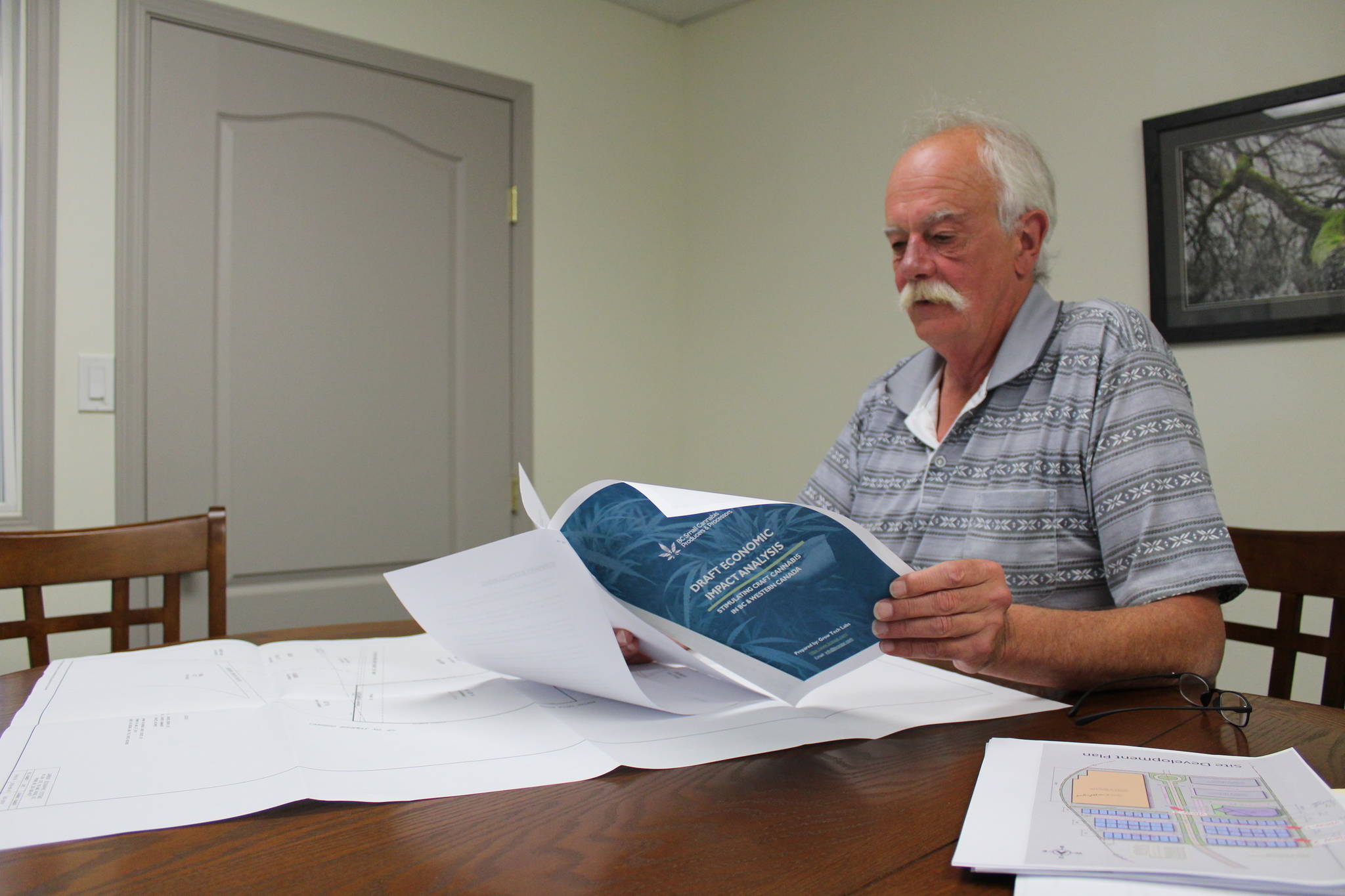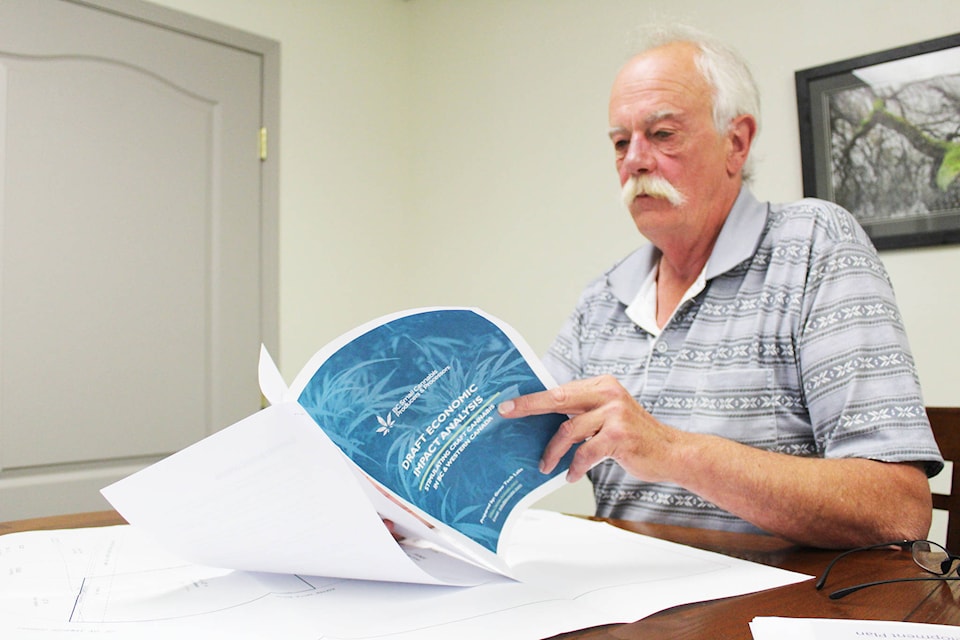The prospect of licensed cannabis production is a reality that is rapidly spreading across B.C. municipalities, and the potential for a craft cannabis production facility to open in the South Cariboo has spurred plenty of debate in the past week.
On Aug. 20, a public hearing was held in 100 Mile House to provide locals with the opportunity to express their questions and concerns around a facility operating within the municipality. Though some concerns were raised at the public hearing, a recent online poll by the Free Press indicated an overwhelmingly positive response to the proposed facility.
Nigel Hemingway is the agent representing the landowners, Bridge Creek Estate, who applied to the district seeking two proposed amendments that will pave the way for the facility to move ahead.
“The primary thing is: we respect the opinions that were given, but we firmly believe we can deal with every one of them so that they’re satisfied once it’s there,” said Hemingway.
He was not surprised by the public response but said there is a bit of public misconception about the proposed facility.
He noted that social impacts are not something the applicants can directly address, as those types of concerns should have been raised when the government brought in the new legislation and while the municipality was navigating cannabis legalization alongside other B.C. communities.
“The other concerns that were raised, we’re pretty comfortable that they can all be dealt with to the satisfaction of the people.”
Hemingway explained that council has the right to set the conditions on the zoning for such a facility and ultimately, it is their decision on whether or not to green-light the project, which at this point, is at a standstill. Until the necessary amendments are granted, the applicants cannot move forward.
“The benefit of the way the system works now is that if council decides to move forward and give us a third reading, it’s really giving us the marching orders of what we have to do to appease the public. I’ve had many, many public hearings, some very controversial, some not, but that’s the beauty of the process.”
One of the main concerns raised during the public hearing involved potential odour emissions. Hemingway is confident that odour won’t be a concern, as other facilities have been successful in mitigating such concerns.
“We firmly believe that we can deal with that through the use of carbon filters and through the use of HEPA filters and properly installed HVAC systems. The model that we were looking at is what’s basically used in microchip processing plants and pharmaceutical plants. What they’re doing is filtering all that air as it comes in because they don’t want that in their product. This would be almost the reverse situation, we would filter the air before it goes out.”
Hemingway said that the team behind the proposed cannabis production facility have done their research to understand how similar facilities have been successful elsewhere.
If the project receives the green light to move forward, then the applicants will still go through regulatory processes with Health Canada, the province, and the municipality to set the appropriate requirements for the proposed facility.
Concerns were also raised about neighbourhood grow-operations, but the proposed facility is nothing of that sort.
“If we get a third reading, then there will certainly be a lot more follow-up and the public will start to understand what this is all about. I have a problem with the use of the ‘grow-op’ term because that’s not what this is.
If this facility goes, those sort of [operations] would have the ability to get the proper permits and operate in a proper facility that doesn’t create those problems. So, in effect, we could be mitigating to a large extent. Those sort of operators that are out there now, that might be in the black area or might be in the grey area, they don’t have the money to build the facility that the federal government is requiring, right. They don’t have the money to put in those expensive air filtration systems. So the whole concept is: we build the facility and then these people come to it.”
Read more: 100 Mile House residents express concerns over proposed cannabis production facility
“These are totally enclosed facilities,” he explained. “They’re not like greenhouses on the side of the road—most of them are done where the water is totally recycled inside the plant.”
Concerns were also raised about minors accessing the facility, which Hemingway said won’t be a problem, as he repeated that there is no retail aspect proposed for the area.
“The retail aspect is grow, process, and [then] it [will be] sold to the province.”
The next council meeting takes place on Sept. 10, meaning that at this point, the decision to amend bylaws that would enable the cannabis facility to take root in 100 Mile House is now in the hands of local government.
“There’s nothing we can do now,” said Hemingway. “Basically, we wait until Sept. 10. If council elects to give us a third reading, we do have a couple conditions already that we know of. We have to operate in an industrial zone and that industrial zone allows for an awful lot of other uses that we would never want to have on the side of the highway. One of the conditions is that we will enter into a covenant that says, ‘if you give us this zone, we will restrict the use to just this and that small education component that we’re hoping to include within it’.”
The applicants are willing to satisfy those conditions and get the bylaw amendment adopted.
The fear of the unknown is prevalent, said Hemingway: “We’ve been doing public hearings for years and that’s always what it is. It’s a change, but it’s a legal operation, you know.”
Hemingway said that the educational component proposed would be a small facility where people can come in to learn the trade and all the proper requirements.
“If we have an out of work mill-worker here, he can get a little bit of education, learn the process, then come back in and work.”
Depending on the size of the facility and the permits secured, the proposed site could employ anywhere from five to 30 people, but none of those numbers are definite yet, as the applicants are only in the early stages of the project. The amount of employees and size of the site will ultimately depend on the investors the project attracts.
“The micro-processing is totally restricted in size,” Hemingway explained. The amount of crop grown per year is restricted by the government, but a licensed facility would allow for a bigger space, and that potential will depend on who steps up to the plate to invest.
“There have been discussions with several different people that are already involved in the industry. Basically, the response is, ‘show us the zoning will allow us to put it on the land, and then we’re interested.’ We have to get over that hurdle first, then as soon as we have that zoning, then those discussions can start back up.”
Related: Cariboo Regional District adopts bylaws allowing non-medical cannabis production
Hemingway also addressed concerns raised by the Hillside Church community, noting the presence of hydro-lines between the two properties, which creates a 165-foot buffer between the sites.
“Those are the sort of things that the public don’t appreciate.”
There is also a hill that serves as a buffer between the two areas, he said. However, if council is unsatisfied with the distance between the two sites, then that will have to be factored into the applicant’s development plans.
“My client is a pretty responsible landowner. They won the B.C. Cattlemen’s Environmental award a couple of years ago. They don’t want to do anything that’s bad for the town either, so they care.”
He noted that they have employed sustainable practices on their ranches, and really care about the community.
The current mock-ups of the facility are conceptual. The applicant hoped to provide an image of what will be in place, to help the public understand that the facility will be professional: “This will be a quality facility, partly because we have to [make it so].”
If and when the amendment is passed, the applicants will be able to update their site plan appropriately before submitting it for approval to the government.
During the Aug. 20 public hearing, Hemingway indicated that the facility could break ground within two years, but noted that the timeline is a bit out of the applicant’s control, since they must gain local government’s approval.
He acknowledged that the decision is a challenging one, as Council must weigh the community’s concerns against the applicant’s promises.
“We believe firmly that we can deal with all the concerns, [but] council has to be convinced of that. They have to have some trust, understand the regulations and what can be imposed and what can’t be imposed. Every one of those councillors wants to do what’s best for this community as well.”
Hemingway is positive that any and all concerns from the public can be addressed going forward, but noted that if the facility is not approved in 100 Mile House, it will likely be approved in another community.
“It’s going to go somewhere.”
raven.nyman@100milefreepress.net
Like us on Facebook and follow us on Twitter.



